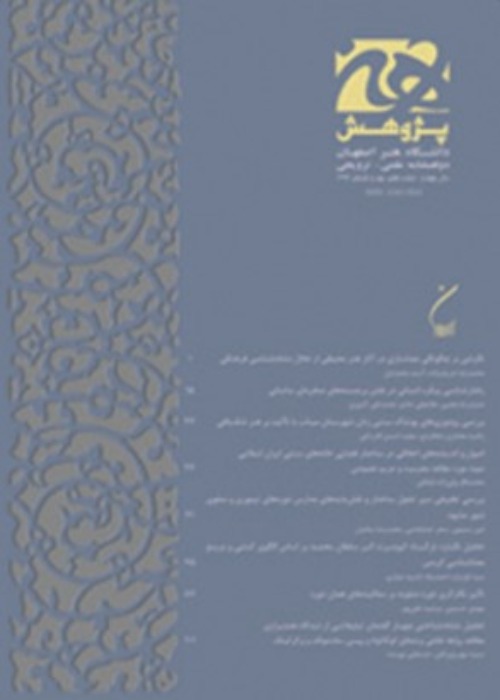how art and politics are combined in the frontispieces of lithographic books of the Qajar period; By studying and analyzing seventy frontispieces preserved in the National Library of Iran (from 1224 to 1324 AH)
The tradition of designing frontispieces has been transferred from manuscripts to lithographic books, but with a big difference that in the frontispieces of lithographic books, symbols that have different meanings have been used, and these symbols have caused the frontispieces in this books in addition to being decorative, also have expressions. Therefore, the combination of art and politics in these frontispieces is the main difference between them and their predecessors in manuscripts, and this feature has necessitated the study of these frontispieces in the present article. As a result, the purpose of this study is 1- to identify frontispieces with political (royal) symbols. 2- Examining the form of the two symbols of “crown” and “lion and sun” in these frontispieces and 3- Explaining how the process of using these two symbols is related to contemporary political developments. The first part of the present study has been done by the method of content analysis of historical texts and the second part has been done by the descriptive-analytical method. The results of studies show that the combination of art and politics in the frontispieces of lithographic books has been done through the use of government symbols, and among the symbols used in the titles, the two symbols “lion and sun” and “crown” have been used the most and the symbol of the “crown” has been used much more than the symbol of the “lion and sun” in the frontispieces, and the evolution of the use of these symbols shows that the further we go on the timeline, the less the symbol of the “lion and sun” and the more the symbol of the “crown” has been used and this is parallel to the political developments of the society in which we are gradually approaching the time of signing the constitutional law (1324 AH). As a result, the extensive use of the “crown” as a royal symbol in these frontispieces can be considered as an attempt to maintain the monarchy and legitimize the government and protect the position and throne, which has become more unreliable with the intensification of the constitutional revolution.
Qajar period , lithography , frontispiece , crown symbol , lion , sun
- حق عضویت دریافتی صرف حمایت از نشریات عضو و نگهداری، تکمیل و توسعه مگیران میشود.
- پرداخت حق اشتراک و دانلود مقالات اجازه بازنشر آن در سایر رسانههای چاپی و دیجیتال را به کاربر نمیدهد.




